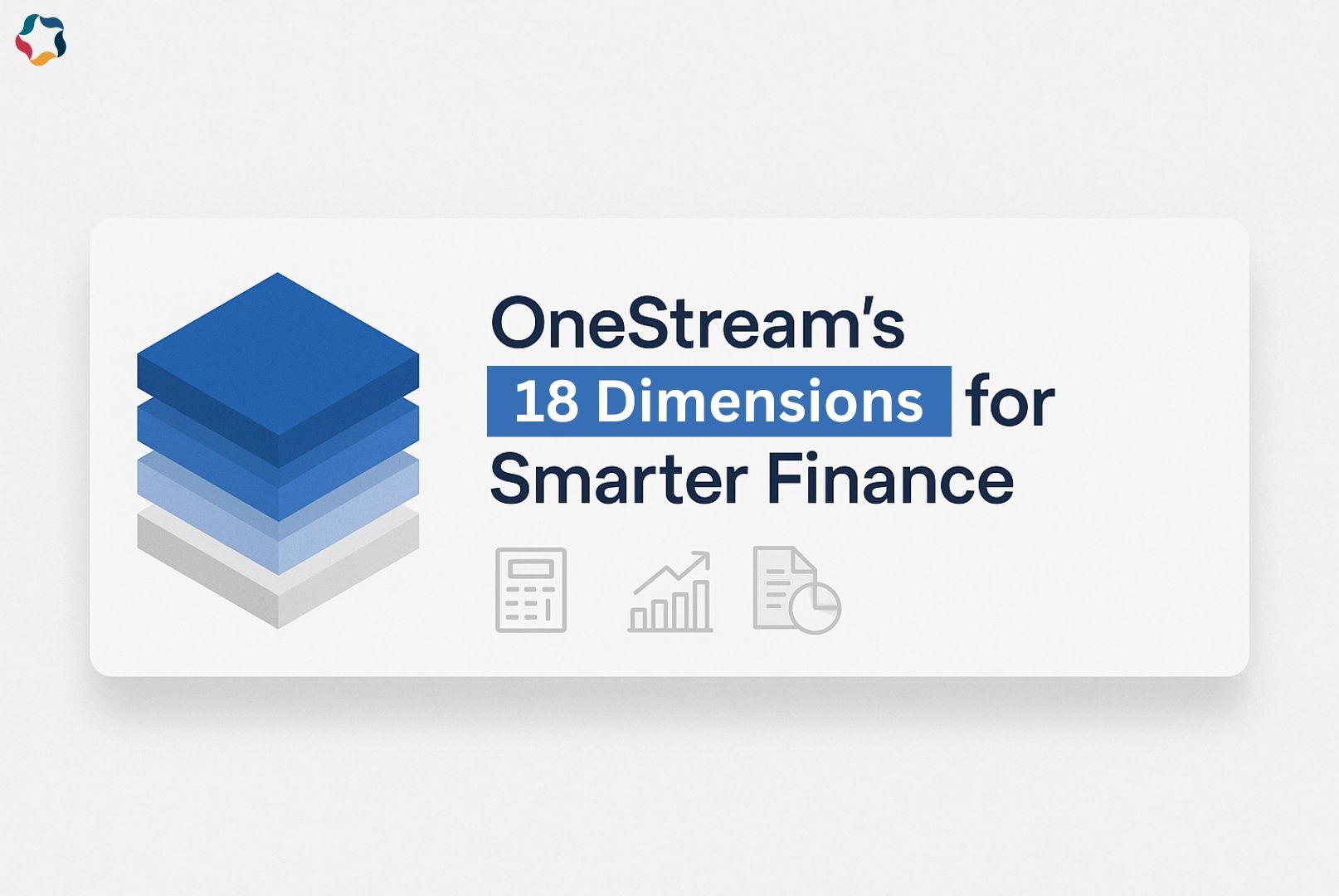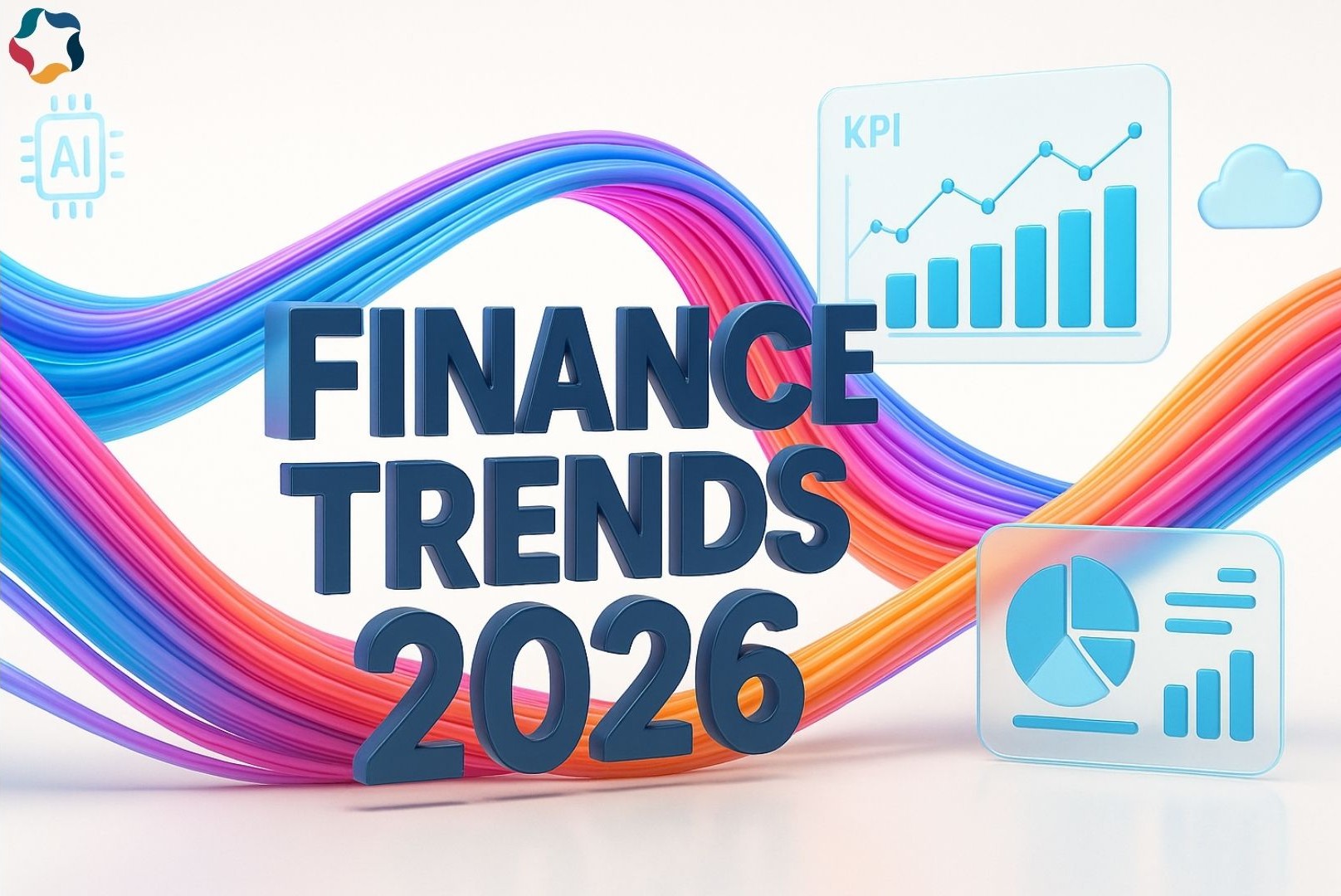
Table of Contents
As finance professionals, we know that strong data organisation and analysis are key to good corporate performance management (CPM). OneStream is a top enterprise finance platform that stands out because it combines planning, budgeting, reporting, and consolidating finances in a single step. At the heart of OneStream’s architecture is its multidimensional cube structure, which supports exactly 18 OneStream dimensions. Because it is based on Extensible Dimensionality, this design lets businesses change their financial models while keeping the framework the same and scalable.
In this post, I’ll break down the 18 OneStream dimensions, drawing from official documentation and best practices. Understanding these core OneStream dimensions can transform how you handle complex financial data, whether you’re implementing the platform for the first time or optimizing an existing setup. Let’s dive in!
What Are the OneStream Dimensions?
OneStream dimensions act like folders for organizing business data. Each dimension contains members (e.g., specific accounts or entities) that represent slices of your organization’s information. The platform categorizes these OneStream dimensions into:
• System-Defined (Fixed, Non-Editable): These are built-in and cannot be modified in purpose, ensuring consistency across applications (e.g., Origin and View).
• Configurable (Editable): These can be changed to meet the needs of your business (for example, Account, Entity).
• User-Defined: These are eight flexible dimensions (UD1# to UD8#) that you can name and organise based on your needs, like products, customers, or projects.
Every OneStream cube – a multidimensional structure for storing, calculating, translating, and consolidating data—incorporates all 18 OneStream dimensions. This fixed count makes it possible for dimensions to grow or shrink depending on situations, cubes, or reporting needs, all without changing the model itself.
Extensible Dimensionality is a game-changer for working with OneStream dimensions: it lets you add detail to dimensions (e.g., breaking out sub-accounts) for specific entities or scenarios, while keeping summary views simple. This adaptability lets different business units work together on a single platform, breaking down barriers and making things run more smoothly.
The 18 OneStream Dimensions: A Comprehensive Breakdown
OneStream dimensions are referenced using tokens (e.g., A# for Account members). Below, I’ll list and explain each one, grouped by category for clarity. Note that while the total is fixed at 18, user-defined OneStream dimensions offer the most customization.
System-Defined Dimensions (Fixed)
These provide foundational structure and cannot be edited.
- Origin (O#): Tracks the source of data, such as whether it’s imported, adjusted, or calculated. It is essential for audit trails and data integrity, helping trace entries back to their origins (for instance, manual journals versus automated loads).
- View (V#): Defines how data is viewed, such as Year-to-Date (YTD), Periodic, or annotations like footnotes and variances. It’s commonly used in reporting to switch between cumulative and incremental perspectives, including stored commentaries or attachments.
Configurable Dimensions (Editable)
These have predefined purposes but allow customization of members and hierarchies.
- Entity (E#): Represents organizational units, like subsidiaries, departments, or legal entities. It supports hierarchical structures for roll-ups and is key for consolidations across global operations.
- Scenario (S#): Differentiates data sets, such as Actual, Budget, Forecast, or What-If scenarios. It enables side-by-side comparisons and supports parent-child relationships for grouping (without consolidation).
- Account (A#): Structures your chart of accounts, including assets, liabilities, revenues, and expenses. It allows for dynamic calculations and is central to financial reporting.
- Flow (F#): Captures movements in data, like opening balances, additions, disposals, or FX impacts. Often used for cash flow or balance sheet reconciliations, it’s customizable for specific tracking needs.
- Intercompany (I#): Manages transactions between entities, facilitating eliminations and matching. It’s crucial for accurate group reporting in multi-entity organizations.
- Time (T#): Handles periods like months, quarters, or years. It supports predefined (e.g., monthly/weekly) or custom calendars, with options to vary descriptions by year or set custom start dates.
- Consolidation (C#): Supports aggregation and elimination processes, including members for local GAAP, IFRS adjustments, or parent adjustments. It’s vital for statutory consolidations.
- Parent (P#): Focuses on hierarchical relationships, often used for parent-child structures in consolidations or adjustments. It helps in modeling complex ownership scenarios.
User-Defined Dimensions
These eight dimensions (UD1# to UD8#) are fully customizable and have no predefined purposes. Organizations often label them based on needs, such as:
11-18. User Defined 1 to 8 (U1# to U8#): Examples include:
- Products/Services
- Customers/Vendors
- Projects/Departments
- Regions/Geographies
- Cost Centers
- Channels
- Employees
- Any other business-specific attribute
By default, some implementations assign Flow to UD1, Intercompany to UD2, and Consolidation to UD3, but you can rename or reassign them. They support stored or dynamic calculations and are extensible for detailed breakdowns.
| Category | Dimensions | Key Use Cases |
| System-Defined | Origin (O#), View (V#) | Data sourcing, reporting views |
| Configurable | Entity (E#), Scenario (S#), Account (A#), Flow (F#), Intercompany (I#), Time (T#), Consolidation (C#), Parent (P#) | Organizational structure, time-based analysis, consolidations |
| User-Defined | UD1# to UD8# | Custom attributes like products, customers, or projects |
Why the 18 OneStream Dimensions Matter: Benefits for Finance Teams
18 OneStream dimensions models offer unmatched flexibility without added complexity.
- Scalability: Manage increasing data volumes and business changes with flexible structures.
- Unified Platform: Remove multiple tools by unifying FP&A, close, and reporting in one model.
- Efficiency: Streamline calculations, translations, and consolidations, reducing manual effort.
- Insights: Examine data from multiple angles for better analysis, improving forecasting accuracy.
- Compliance: Built-in audit trails and controls ensure adherence to regulations.
For example, a multinational company can use the Entity and Intercompany dimensions for global consolidations while extending user-defined dimensions for region-specific details—all within the same cube.
Conclusion
The 18 OneStream dimensions of OneStream enable finance leaders to create agile, future-proof models that align with their strategic goals. If you’re looking into CPM solutions or already using OneStream, fully utilizing these dimensions can lead to transformative results.

Jay Ghediya
Senior Software Engineer
Results-driven Senior Software Engineer with expertise in JavaScript/TypeScript across front-end and back-end. Experienced in delivering high-performance solutions in Fintech, Healthcare, Education, Task Management, and ERP, with a strong focus on aligning technical excellence with business needs.











 sales@solutionanalysts.com
sales@solutionanalysts.com solution.analysts
solution.analysts






